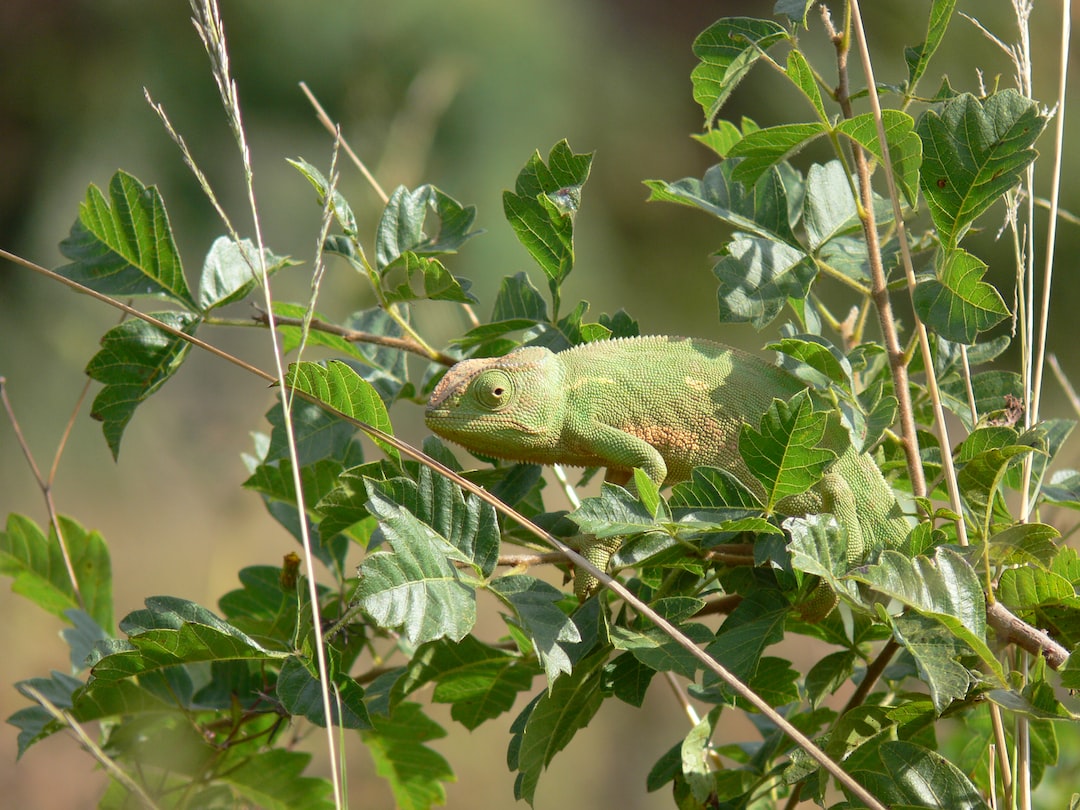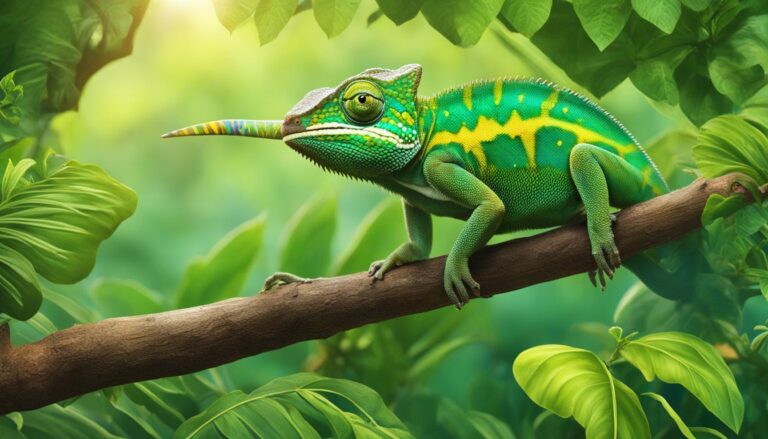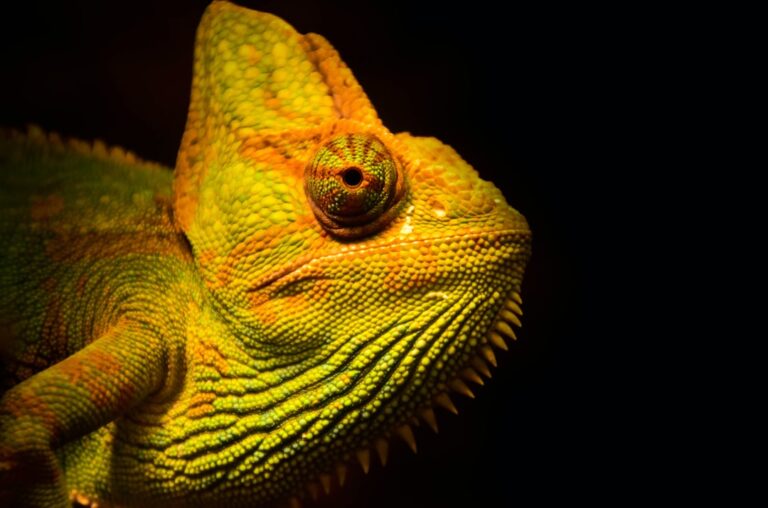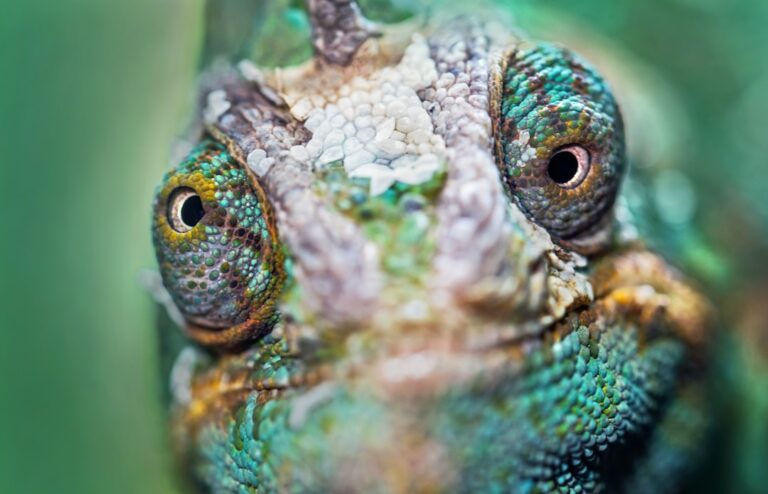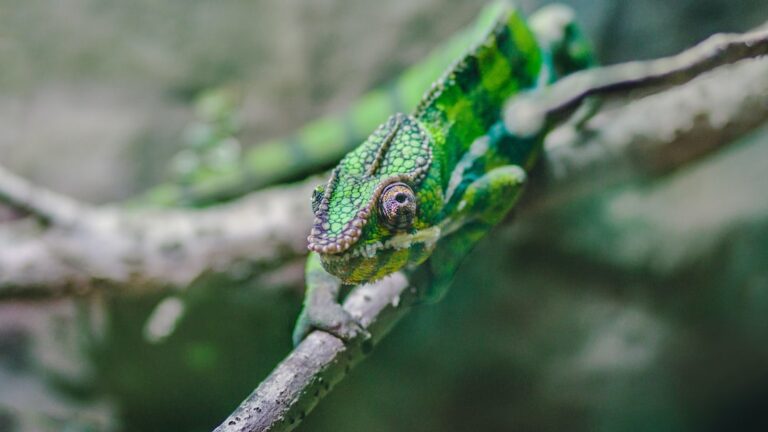Are Chameleons Predators or Prey?
Chameleons are fascinating creatures that have captured the imagination of people around the world. With their unique ability to change color and their distinctive physical features, chameleons are truly one of nature’s wonders. In this article, we will explore the anatomy and adaptations of chameleons that allow them to survive in their environment. We will also delve into their role as predators and prey, their hunting techniques, and the various threats they face in the wild.
Table of Contents
Chameleon Anatomy and Adaptations for Survival
Chameleons have a number of physical features that help them survive in their natural habitat. One of the most notable features is their long, sticky tongue, which they use to capture prey. Their eyes are also unique, as they can move independently of each other, allowing them to have a 360-degree field of vision. This gives them an advantage when hunting for food or keeping an eye out for predators.
Another adaptation that chameleons possess is their ability to change color. This is not just for camouflage, but also for communication and thermoregulation. By changing their skin color, chameleons can blend in with their surroundings and avoid detection by predators or prey. They can also change color to communicate with other chameleons, such as during courtship or territorial disputes.
Chameleons as Predators: Hunting Techniques and Prey
Chameleons are skilled hunters and have developed unique techniques to capture their prey. One of their most effective hunting strategies is their ability to remain completely still for long periods of time. They patiently wait for an unsuspecting insect to come within striking distance before launching a lightning-fast attack with their long tongue.
Chameleons primarily feed on insects, such as crickets, grasshoppers, and flies. They are also known to eat spiders, snails, and small reptiles. Their diet largely depends on their habitat and the availability of prey. Some larger species of chameleons have been known to eat birds and small mammals.
What Do Chameleons Eat?
Chameleons have a varied diet that consists mainly of insects. Some of the insects they commonly eat include crickets, grasshoppers, beetles, and moths. They also consume spiders, snails, and worms. The specific diet of a chameleon can vary depending on its species and the environment it inhabits.
In addition to insects, chameleons have been observed eating small reptiles, such as geckos and skinks. They are opportunistic feeders and will consume any small animal that they can overpower. However, their primary source of nutrition comes from insects.
Chameleons as Prey: Natural Predators and Threats
While chameleons are skilled predators, they are also prey for a number of animals in their natural habitat. Some of the natural predators of chameleons include birds of prey, snakes, and larger reptiles such as monitor lizards. These predators rely on their speed and agility to catch chameleons.
In addition to natural predators, chameleons also face threats from human activities. Habitat loss due to deforestation and urbanization is a major threat to chameleon populations. Climate change is also impacting their habitats, as it alters temperature and rainfall patterns. These changes can disrupt the delicate balance of ecosystems and negatively affect chameleon populations.
Chameleon Camouflage: How They Use It to Survive
One of the most fascinating aspects of chameleons is their ability to change color. This adaptation allows them to blend in with their surroundings and avoid detection by predators or prey. Chameleons have specialized cells in their skin called chromatophores, which contain pigments that can be expanded or contracted to change the color of their skin.
Chameleons can change color for a variety of reasons. They may change color to match their background and become virtually invisible to predators or prey. They can also change color to regulate their body temperature. By darkening their skin, they can absorb more heat from the sun, while lightening their skin helps them reflect excess heat.
Chameleon Defenses: Fighting Back Against Predators
In addition to their ability to change color, chameleons have other defenses to protect themselves from predators. When threatened, they may inflate their bodies to appear larger and more intimidating. Some species of chameleons also have spiky protrusions on their bodies that deter predators from attacking.
Chameleons are also capable of delivering a painful bite if necessary. While they are not venomous, their sharp teeth can inflict damage on potential predators. Additionally, some species of chameleons have the ability to shoot a stream of sticky saliva at their attackers, which can immobilize them and allow the chameleon to escape.
Chameleon Reproduction: How It Affects Their Status as Predators or Prey
The reproductive behavior of chameleons can impact their role as predators or prey in the ecosystem. Female chameleons typically lay eggs, which they bury in the ground or attach to vegetation. The eggs are left unattended, and the female does not provide any parental care.
This reproductive strategy makes chameleon eggs vulnerable to predation by other animals. Snakes, birds, and small mammals may feed on chameleon eggs, reducing the chances of successful hatching. This is one reason why chameleons produce large numbers of eggs in each clutch, increasing the likelihood that at least some will survive.
Human Impact on Chameleon Populations and Their Role in the Ecosystem
Human activities have had a significant impact on chameleon populations around the world. Deforestation and habitat loss have resulted in the destruction of their natural habitats, leaving them with limited resources and increasing their vulnerability to predators. Climate change is also affecting chameleon populations, as it alters their habitats and disrupts their breeding patterns.
Chameleons play an important role in their ecosystems as both predators and prey. As predators, they help control insect populations, which can have a significant impact on plant health and ecosystem balance. As prey, they provide a food source for other animals, contributing to the overall biodiversity of their habitats.
Chameleons as Both Predators and Prey in the Natural World
In conclusion, chameleons are remarkable creatures that possess unique adaptations for survival. Their ability to change color, along with their physical features and hunting techniques, allows them to thrive in their natural habitats. However, they also face threats from natural predators and human activities.
Understanding the nature of chameleons is crucial for their conservation and the preservation of their ecosystems. By protecting their habitats and raising awareness about the importance of these fascinating creatures, we can ensure that chameleons continue to play their vital role as both predators and prey in the natural world.
If you’re interested in learning more about reptiles, you might want to check out this fascinating article on the smallest chameleon pets. It delves into the world of these tiny creatures and provides valuable insights into their care and behavior. From their unique ability to change colors to their specialized diet, this article is a must-read for any reptile enthusiast. So, after you’ve discovered whether chameleons are predators or prey, why not explore the world of these pint-sized reptiles?

